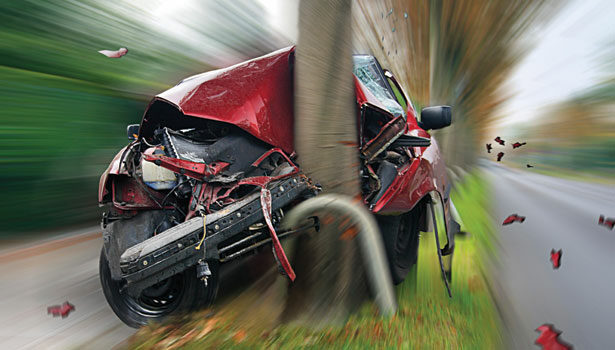Many roofing professionals are impacted with an increase in automobile insurance costs due to a substantial rise in frequency and severity of auto claims. Severe auto losses can expose the assets of a roofing company if they are not properly managed. It is becoming more common to see relatively low-impact auto claims reach six and even seven figure ranges. A severe auto accident could possibly exceed the roofing company’s insurance policy limits. It can also have a dramatic effect on the company’s workers’ compensation budget for years to come.
Some of the factors that can increase exposure to loss include:
- Fleet safety management programs that are loosely enforced
- Driver qualification standards
- Personal use of company vehicles
- Personal vehicles being utilized for company business
- Electronic device usage policy
- Accident investigation procedures
- Preventive maintenance programs
A formal, written and well-enforced fleet safety program is the cornerstone of an auto risk management program. Once fleet guidelines and procedures are implemented, it is important to communicate the fleet safety program to every employee. Each employee should review and acknowledge the company’s fleet insurance program and procedures. A solid fleet safety program typically defines proper vehicle use and driver criteria. It should also detail fleet safety rules, accident investigation procedures, vehicle maintenance requirements and place limitations on using electronic devices, such as smart phones.
There should be written driver qualification criteria. The driver criteria should define what an acceptable driving record is for driver eligibility. The majority of preventable automobile accidents correlate directly to the personal driving habits of the drivers. This is why it is extremely important to have a driver selection process and established monitoring procedures for existing drivers. The driver qualification typically contains written driver procedures for progressive disciplinary actions and terminations for not adhering to the corporate fleet standards.
The fleet safety program should contain driver eligibility for the personal use of company vehicles. Occasionally roofing professionals experience claims resulting from the use of company vehicles by drivers other than employees. We recommend a written policy that controls the use of company vehicles and communicates who is allowed to drive the company vehicle. It is highly recommended that only the employees have access to company vehicles. We also recommend that employees do not use company vehicles for their personal use to diminish the probability of an automobile loss during non-company business.
Another area of potential claim exposure is the use of personal vehicles that are being driven by employees for business purposes. A recommendation to control losses from employees driving their own vehicles for business purposes is to require these employees to maintain personal insurance policy limits of at least $100,000 per person and $300,000 per accident for bodily injury and property damage. If there is an automobile claim that results in damages above the employee’s personal insurance limits, the claimant’s attorney will often seek additional insurance coverage limits by taking legal action against the roofing contractor. A copy of the insurance card for these employees should be kept on file to track and ensure coverage and limits are adequate. Your insurance advisor should be able to identify policy exclusions or coverage limitations with the personal auto policy of the employee that may limit availability of insurance coverage extended to the roofing company. The roofing contractor can contain the exposure if the company adds certain coverage to its fleet insurance program (hired auto and non-owned automobile liability coverage).
Accident Investigations
It is vital to have procedures in place for employees to conduct after an automobile accident. Employees involved in an accident should know company procedures. The procedures should include:
- What to do with the vehicle (i.e., turn on flashers, pull to side of road, etc.).
- Call the police.
- Exchange insurance information, but under no circumstance should the employee make comments on assuming liability.
- Obtain names and addresses of all witnesses (if available).
- Complete an accident investigation report (kept in all vehicles).
- Report the accident to the insurance carrier.
- Obtain a copy of the police report including case number and officer name.
- Immediately after the automobile accident, draw a sketch of the accident identifying location, impact area, conditions at the time of accident, etc.
According to National Highway Traffic Safety Administration (NHTSA), distracted driving crashes caused 3,328 deaths and 421,000 injuries in 2012. NHTSA determined texting and cell phone usage were the leading causes of these accidents. To protect the assets of the roofing company, we recommend a formal written electronic device use policy that is communicated and acknowledged by all employees. Because phone and text records are easily obtainable and can be tied back to electronic device usage, we recommend a zero tolerance policy for electronic devices while driving a vehicle for company business.
Some other items to consider in an effective fleet management safety program are:
- Installing GPS monitoring or some other type of tracking system in the vehicle to capture speed, location, etc.
- Annual training for drivers, including defensive driver courses and review of the fleet management safety program.
- Third-party monitoring (“How’s My Driving” stickers) and a fleet accountability program, which might tie driver status and vehicle losses to bonuses.
Being proactive and managing your insurance budget (typically the No. 3 expense item on a roofing professional’s balance sheet) will help protect profit margins and create an advantage in a very competitive environment.






Report Abusive Comment